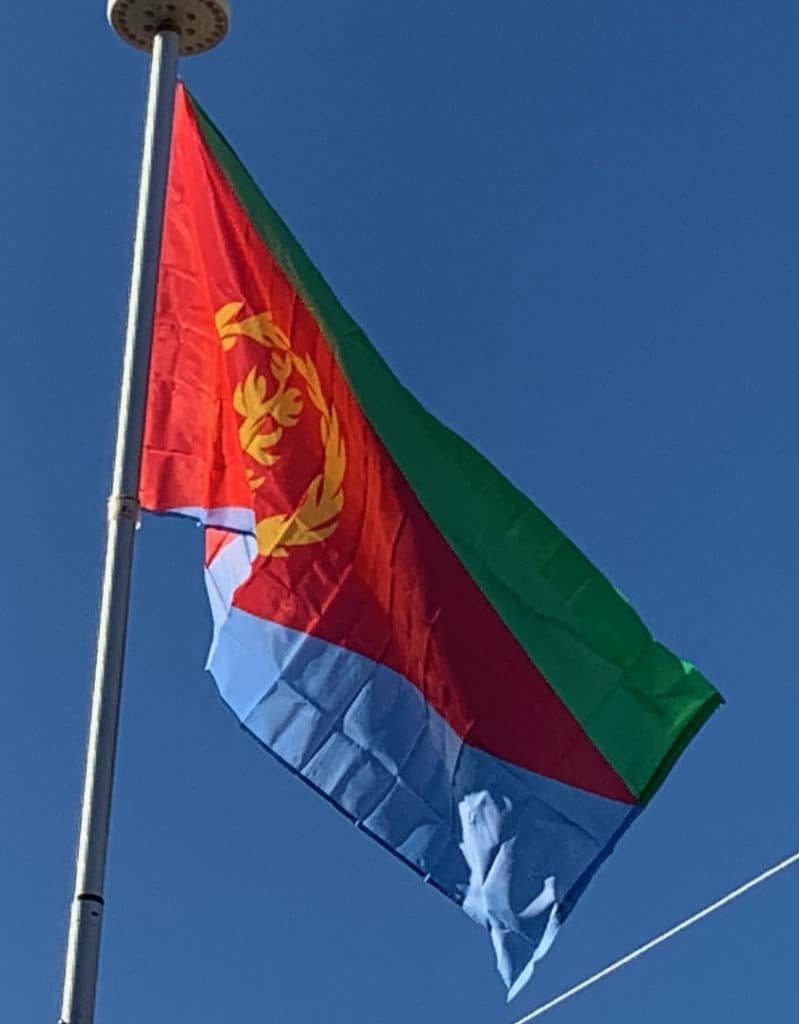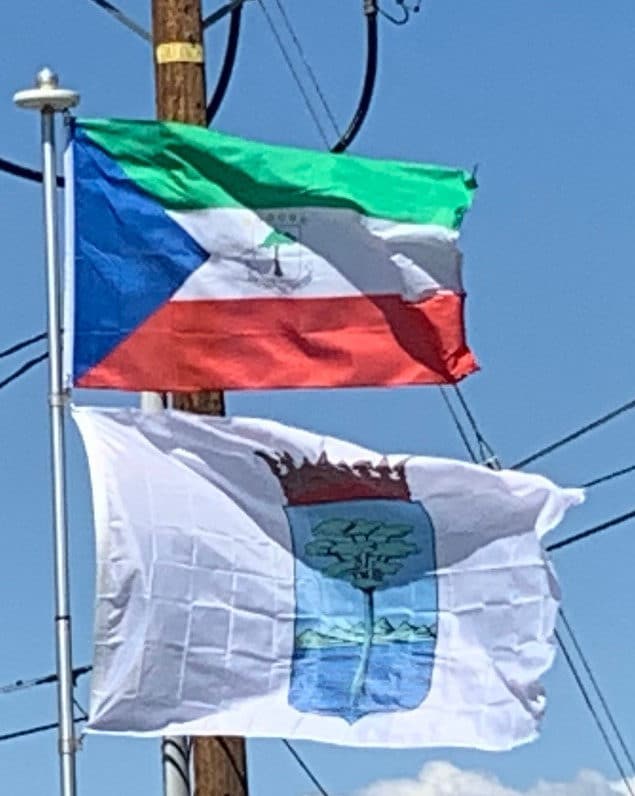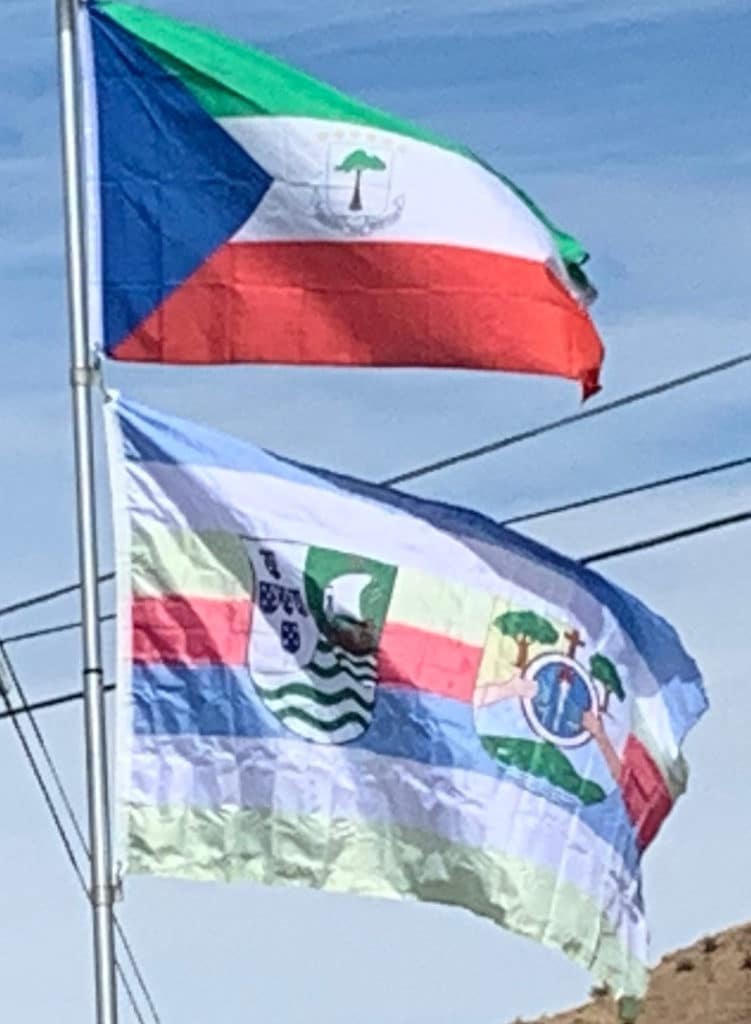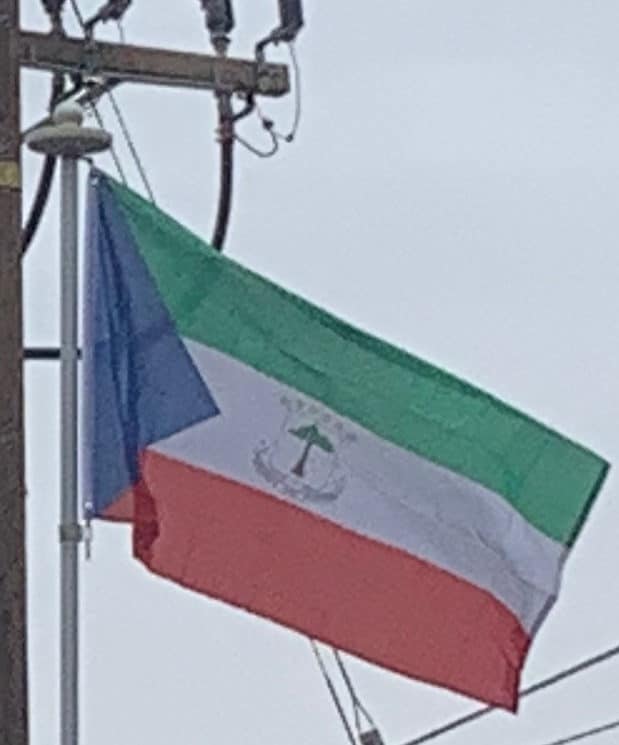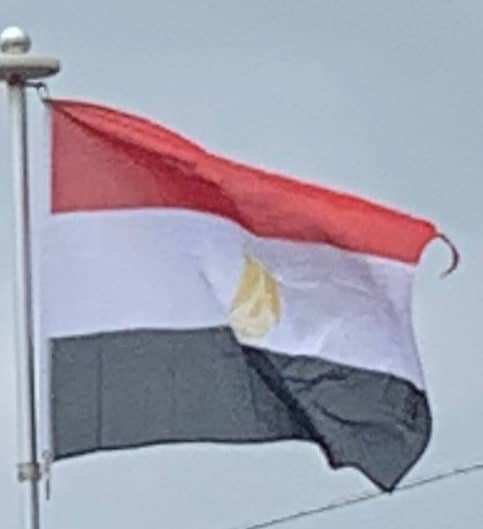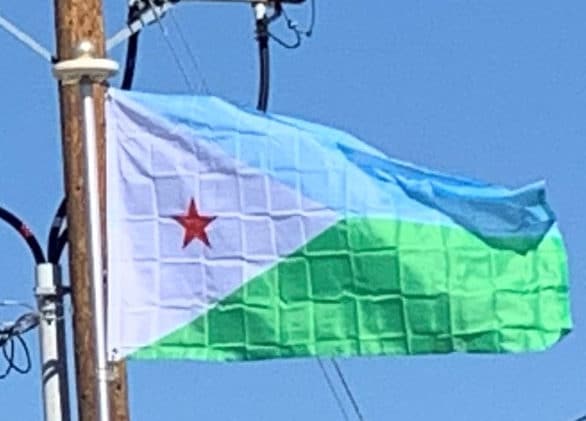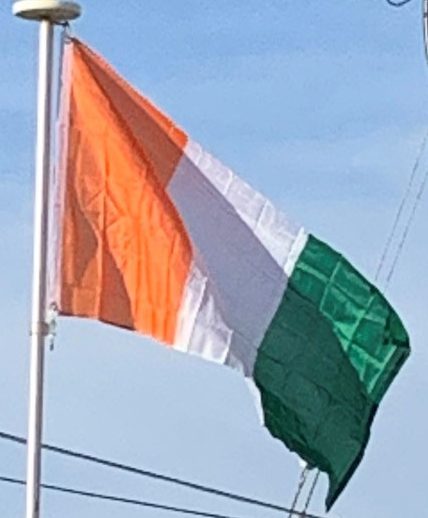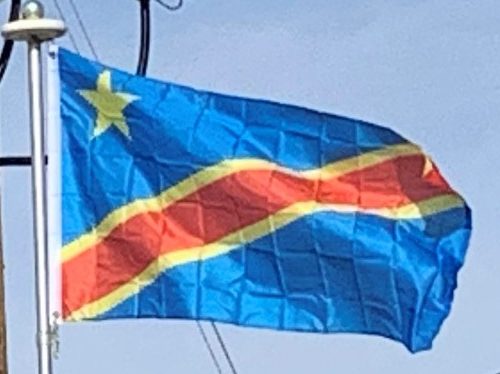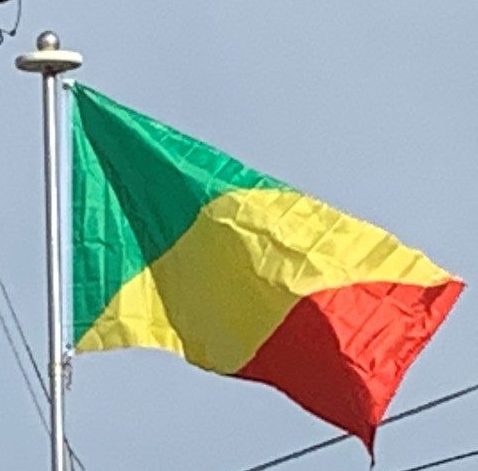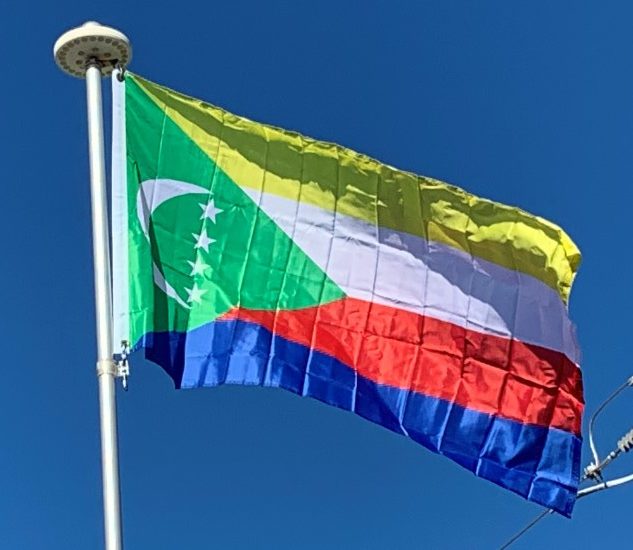Eritrea
The flag of Eritrea is dominated by a red isosceles triangle based on the hoist-side pointed toward the fly-side and then divided into two right triangles. The upper triangle is green and the lower triangle is blue with an Emblem (1952-1962) in gold (a vertical olive branch encircled by an olive wreath) centered on the hoist side of the triangle. The CIA World Factbook 2012 points out that the shape of the red triangle mimics the shape of the country.
